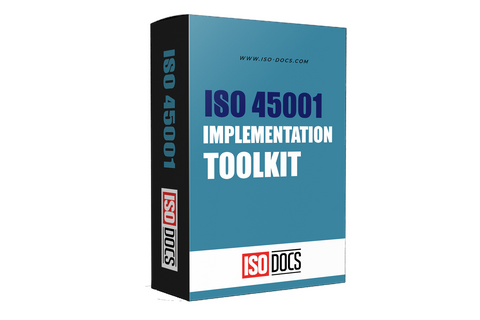ISO 45001 Implementation Detailed Plan Template
Introduction
Implementing an Occupational Health and Safety Management System (OHSMS) based on the ISO 45001 standard is crucial for organizations looking to ensure a safe and healthy work environment for their employees. This detailed plan template outlines the key steps and processes in implementing ISO 45001 effectively within your organization. By following this structured approach, you can streamline the implementation process, identify potential pitfalls, and achieve certification confidently. Discover how this detailed plan can help your organization navigate the complexities of ISO 45001 implementation and prioritize workplace safet

Understanding The Need For A Detailed Implementation Plan
An implementation plan is crucial in successfully executing a project or initiative. It provides a roadmap for how the goals and objectives of the project will be achieved, detailing the specific steps, resources, timelines, and responsibilities needed to reach the desired outcome. A detailed implementation plan is essential because language learning and development can be complex and require careful planning.
The plan should outline the specific language skills that need to be developed, the methods and resources used to teach these skills, and the achievable and measurable goals to indicate success. Without a detailed implementation plan, there is a risk of not effectively addressing the needs of learners, overlooking critical steps in the learning process, or failing to allocate resources effectively.
A well-thought-out plan can help educators and learners stay focused, monitor progress, and adjust as needed to meet language learning goals. It provides a clear roadmap for achieving language proficiency and allows for effective monitoring and evaluation of progress. By developing a comprehensive plan, educators can increase the likelihood of successful language acquisition and communication.
Setting Clear Goals And Objectives For A Detailed Implementation Plan
Setting clear goals and objectives for an implementation plan involves defining the desired outcomes and specific milestones to implement a project or initiative successfully. Here are some tips for setting clear goals and objectives for your implementation plan:
1. Start by clearly defining the overall goal of the project or initiative. This should be a broad statement outlining the implementation plan's purpose and desired outcome.
2. Break down the overall goal into specific objectives that must be achieved to reach the desired outcome. These objectives should be measurable, achievable, and time bound.
3. Use the SMART criteria to ensure your objectives are Specific, Measurable, Achievable, Relevant, and Time-bound. This will help you create clear and actionable goals for your implementation plan.
4. Consider breaking each objective into smaller, more manageable tasks or activities. This will help you track progress and ensure each step is completed promptly.
5. Communicate the implementation plan's goals and objectives to all stakeholders involved. Make sure everyone understands their role and responsibilities in achieving the desired outcomes.
6. Review and update the implementation plan's goals and objectives regularly as needed. As the project progresses, you may need to adjust based on changes in circumstances or new information.
By following these steps, you can set clear and achievable goals and objectives for your implementation plan. This will help you stay focused, organized, and on track toward successfully implementing your project or initiative.
Benefits Of Using Implementation Detailed Plan
1. Clear Communication: An implementation detailed plan ensures that all stakeholders clearly understand the tasks, timelines, and responsibilities involved in the project.
2. Improved Organization: Having a detailed plan helps keep the project organized, ensuring that all steps are completed correctly and on time.
3. Minimizes Misunderstandings: By laying out all the details of the implementation process, the likelihood of misunderstandings or confusion is reduced, leading to a smoother project execution.
4. Increases Accountability: A detailed plan assigns specific tasks to individuals or teams, making it easier to hold them accountable for their progress and performance.
5. Identifies Potential Issues: By outlining the implementation process step by step, potential issues or roadblocks can be identified early on, allowing for effective problem-solving and risk mitigation.
6. Enhances Efficiency: Having a detailed plan can help streamline the implementation process, making it more efficient and reducing the chances of delays or setbacks.
7. Facilitates Monitoring And Tracking: An implementation detailed plan provides a roadmap for monitoring progress and tracking milestones, making it easier to assess the project's overall success and make adjustments as needed.
8. Improves Decision-making: With a clear plan, project managers can make informed decisions based on the established guidelines and priorities outlined in the implementation detailed plan.
Conclusion
In conclusion, having a detailed plan for implementing ISO 45001 is crucial for the success of your organization's occupational health and safety management system. Our detailed template provides a comprehensive guide to help you effectively implement ISO 45001 standards within your organization. Utilizing this template can streamline the implementation process and ensure compliance with health and safety regulations. Implementation Detailed Plan for ISO 45001 Template now to optimize your occupational health and safety management system.


